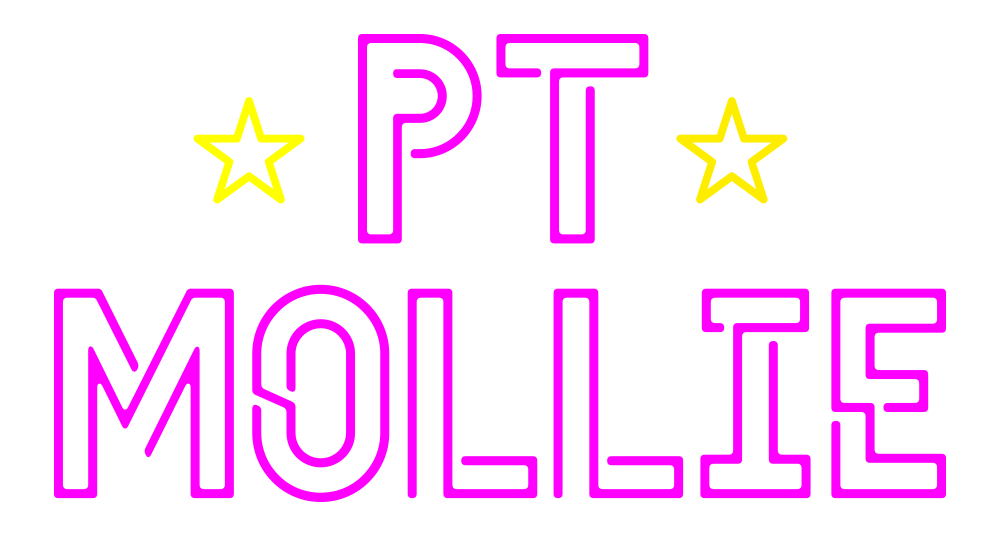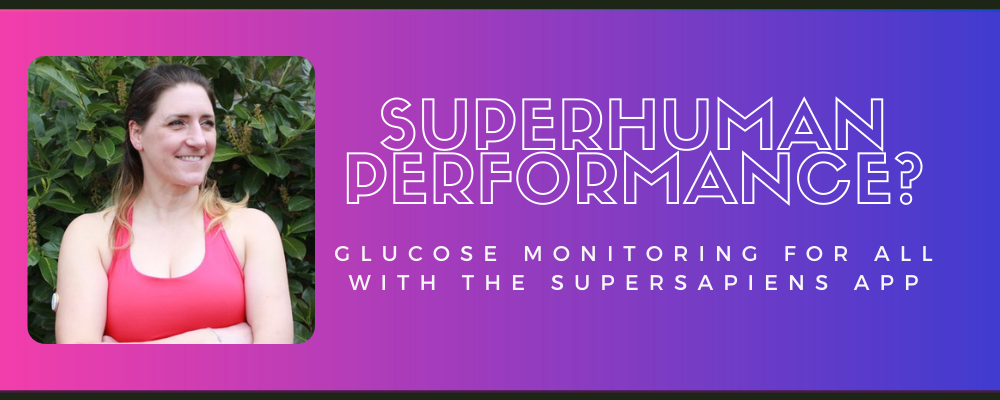
When I saw that my blood sugar could be monitored in real time using the Supersapiens app and an Abbott blood glucose sensor, I thought it was the coolest thing since sliced bread (Facebook advert algorithms work!). As a scientist, anything that provides data on my performance helps me understand what is going well and what isn’t. As a person with a very sensitive stomach, I am cautious about what I use as fuel during training. At some of my World Marathon Major races, I stopped five times to use the bathroom. This makes it very hard to PB if you are constantly wondering if you will have an accident and where the location of the next toilet is. The technology the Supersapiens app is offering, along with the Abbott Libre sensor, will hopefully help me nail down how often I need to fuel (maybe not every 5k?) and what works best for a stable blood glucose.

Many diabetics use a biosensor to monitoring their glucose levels through interstitial fluid rather than the traditional finger prick to obtain blood. The Abbott FreeStyle Libre 2 sensor tracks glucose every five minutes via an app or monitor. There is no limitation on the range of readings and you can program an alarm to indicate if the glucose reading it too high or too low. In contrast, the Libre sensor tracks in real time via Blue Tooth range of 50-200mg/dL. For this reason, the Libre sensor is not suitable for diabetics.

I have only worn the biosensor a few days so far, but already have a few tips on how to make the most out of your sensor. In all the photos on the Supersapiens website (and this blog post), the sensor is applied to the outside of the arm. Three days after applying my first sensor, I knocked it off by bumping into the door frame. May I suggest mounting the sensor on the inside or underneath your arm? One of the other ambassadors purchased an armband holder* to keep the sensor in place. Rotate where you put the sensor so the skin can heal. I have read that a few diabetics will put their sensor on their thigh or chest but I have not seen this an an approved spot to wear the Libre sensor. Before application, clean area (use hand sanitizer or ethanol to remove oil from the skin) and shave the area if it is hairy to ensure a good seal with the sticky pad. The sensor will stay on for a shower and for up to 30 minutes when swimming in shallow water. You can buy a single use performance patch for races to ensure it does not come off. My friend who is diabetic says she uses athletic tape to adhere the sensor sometimes but can’t guarantee how long it will stay on for.

Over the first week, I had to get used to maintaining connectivity via Bluetooth. Sometimes the sensor disconnected and I had to initially reconnect with NFC to sync to my phone before the Bluetooth kicked in. I am not a very techy person, so if you have any tips on the connectivity, please leave a comment below. While I was sleeping, the app and sensor disconnected but this may be to my phone going into power saving mode. The biosensor will hold data for a maximum of eight hours. Luckily, Maple never lets me sleep in late so I was able to see my glucose is fairly stable while I sleep.

The more information you can add to your glucose graph, the better, as that is how you can start to understand how your body creates and uses glucose. I love how you can enter ‘events’ to the graph to log when you eat, sleep, fast, stressed and/or exercise. I would suggest entering events after they occur as the time options are not in real time. I just kept a small list of things to log throughout the day and sat down at night to record them. Many of the members of the Ambassador Facebook group have commented on how combining foods will affect the glucose reaction. For example, eating pasta alone causes a spike but if you add vegetables and beans, the glycogen is released more slowly.

Supersapiens has a large knowledge area to its website, where you can read more about glucose monitoring. They also have a Strava club, Facebook group and Zoom calls every week to talk to their experts (although Zoom might be for ambassadors only). To learn more about glucose monitoring, as well as some tricks and hacks for the continuous glucose monitors, check out Type One Talks on YouTube. I find his info very useful. He even reviewed the Libre sensor.

Are you interested in trying these sensors out? Apply to become a Supersapiens Ambassador via this link. You would be in the company of Nick Butter, the first person to run a marathon in every country in the world, is currently circumnavigating Great Britain by running 200 marathons in 100 days. Fuelling will be a large part of making this challenge a success. Another name you may have heard of is Eliud Kipchoge, who is also using the Supersapiens app and Libre sensors to maximize his performance. I am excited to say he and I will both be at Tokyo Marathon in October, but I don’t think I will be able to catch him.

I will be wearing my remaining sensors in an inconspicuous place for the next six weeks in the hopes that they last the entire two weeks. I haven’t decided yet whether I will be investing in the biosensor and app in the long term yet. Now that I just started working with a run coach, it is the perfect time to focus on the fuelling aspect too and use the data alongside her sessions. I would love to hear if you think glucose monitoring is the way forward and if you have any questions about how it works. Leave a comment below and I will do my best to answer them in my follow up post.

This post was sponsored by Myprotein. They also gave me the clothes in the photos above. The pink outfit is from their Adapt range, red and black from their Power Ultra 2.0 range, and casual wear from their Raw Training line. Supersapiens sent me complimentary sensors as part of their ambassador program. All opinions are honest and my own.
*Affiliate link, which costs the buyer nothing additional and helps pay for this site

